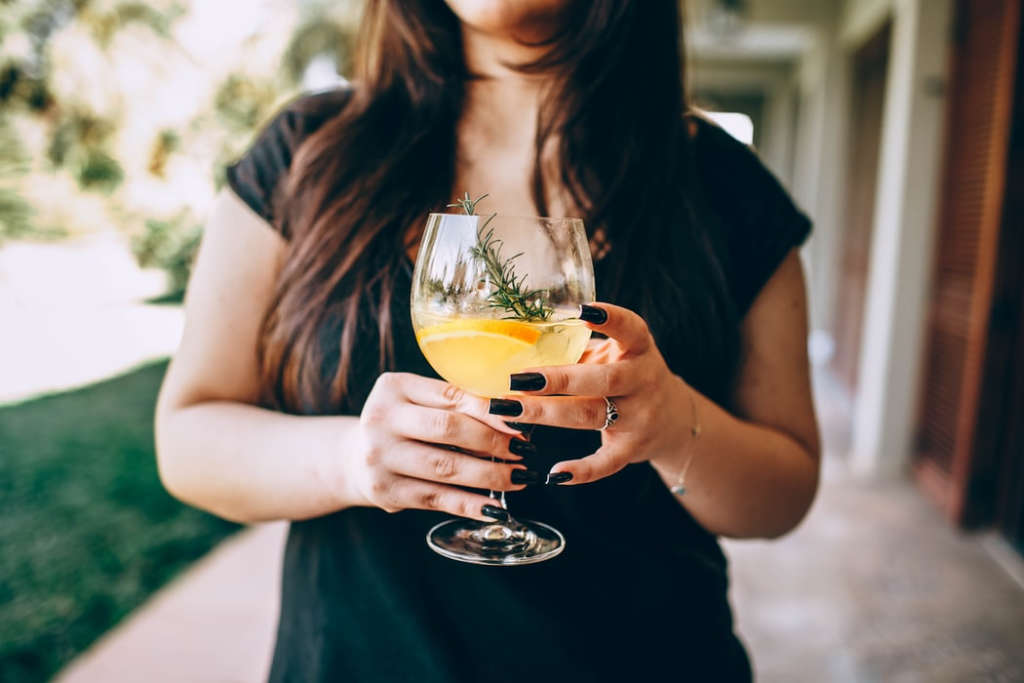Concerned about how much alcohol you’re drinking these days?
First, know that you’re not alone.
Pandemic-related stay-at-home orders and prolonged periods of stress and isolation can lead to the perfect storm for increased alcohol use. In fact, graphs tracking the alcohol boom in the last year look strangely similar to those illustrating COVID-19’s steep surge. And according to a recent survey of nearly 2,000 Americans ages 18 and older, nearly a third of respondents reported binge drinking during the pandemic.
Whether you overindulged while at home or just want to flatten the curve of your alcohol consumption as life slowly returns to normal, there are plenty of tried-and-true methods and tools that can help.
Here are 8 worth considering:
1. Establish a realistic goal – and take baby steps to get there.
Rather than setting a goal that may intimidate or set you up for failure, take the time to write down small goals in a journal. For example, rather than having four drinks every evening, shoot for three, then two, and eventually one. Give yourself ample time to accomplish this goal.
It may take a couple of months to reach your goal, and you might have some setbacks along the way, but don’t throw in the towel.
Keep yourself accountable by counting and measuring your drinks, pacing yourself, and recognizing that reducing your drinking habits requires patience and self-compassion.
2. Commit to a dry period.
Who says you need to wait for Sober October or Dry January to commit to resetting your alcohol consumption?
Try to go dry any time of the year and aim to keep it up for an extended period of time. You may just start by making a commitment to abstain from drinking four days of the week. Once you have success with that, you can increase to a full week, then several weeks, and eventually a month or more.
Whatever the time period, taking a break from drinking can help you reevaluate your relationship with alcohol and may even help you sleep better, lose weight, give your immune system a boost, and improve your mood. Many participants advise clearing your home of alcohol while you abstain—out of sight, out of mind.
3. Find support through helpful resources.
There are so many great resources available that can help provide support – it’s just a matter of finding the one that’s right for you. If you prefer to work at your own pace from the comfort of your own home, digital therapeutics, like vorvida®, might be worth exploring.
Digital therapeutics are online platforms that are often rooted in cognitive behavioral therapy (CBT) techniques and can help address the negative thought patterns and responses that can contribute to unhealthy behaviors around alcohol. Another online program called YANA connects users with various recovery tools and sober support.
If you prefer to be surrounded (virtually for now) by a community of people with similar struggles and experiences, traditional 12-step programs like Alcoholics Anonymous and SMART Recovery might be right for you. Consider your specific needs and goals and do a little bit of research to see what tools and resources are available to you.
4. Try out non-alcoholic beverage options.
Many trendy low-ABV and non-alcoholic beverage brands have emerged in recent years. Even just taking the time to make yourself a delicious zero-proof mocktail or a nourishing drink (e.g., golden milk or green tea) may help quench the urge to imbibe.
5. Up your H20 intake.
This is one of the oldest tricks in the book, but that’s because it’s a good one. Stay well-hydrated throughout the day, and space your alcoholic beverages out by drinking a glass of water between each one. For some people, eating food also reduces the urge to drink.
6. Set a booze budget.
First, determine roughly how much you spend on alcohol in a given month (chances are, you may be unpleasantly surprised), and then set a fixed amount that you’ll spend on alcohol going forward.
This not only provides a framework for evaluating how much you drink but can also incentivize you to drink less. Imagine all that beer and wine money going into a savings account for a future vacation, golden retriever puppy, or swanky new designer bag or barbeque grill.
7. Learn to refuse.
If you tend to drink socially, pre-plan some ways to opt-out, so you’re not caught off guard next time you’re offered a drink. It can even help to practice what you’ll say in advance. However, “no thank you” is always perfectly good enough.
8. Identify other meaningful activities to occupy your time.
If you ordinarily mix a drink at 6 p.m. sharp every day, come up with a plan for what you’ll do during that time instead. For example, take the dog for a walk, make yourself a cup of tea, practice an instrument, pursue a hobby, have a bath, or work-out.
Moderate exercise can often give mood a little boost, too, so just moving your body can help improve your physical and mental health, which can help ease the urge to indulge in an alcoholic drink.
If you or a loved one is experiencing problem drinking or abuse, it’s important to seek help from a medical or mental health professional or another trusted resource.
For additional resources and information about the impact of alcohol on your health, visit https://www.rethinkingdrinking.niaaa.nih.gov/.
The author of this post works at Orexo, the distributor of vorvida®.
*Vorvida® is not a healthcare provider and does not provide medical advice, diagnosis or treatment.

